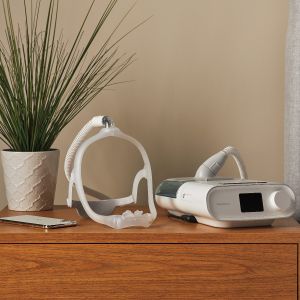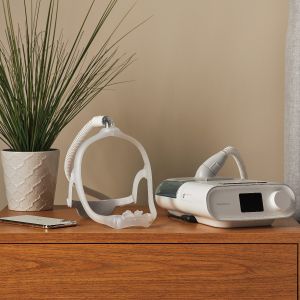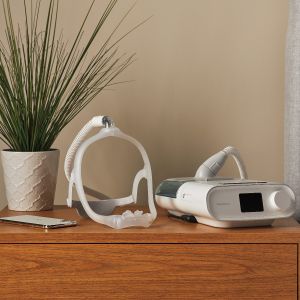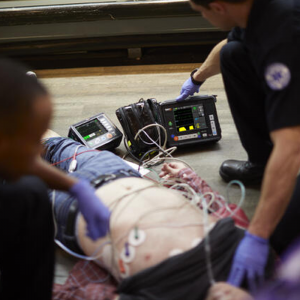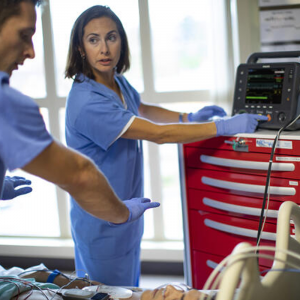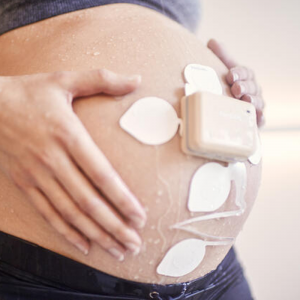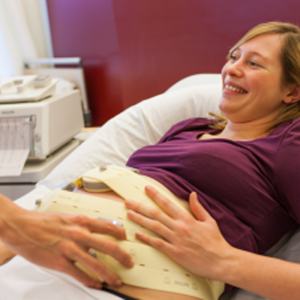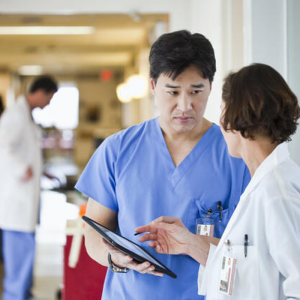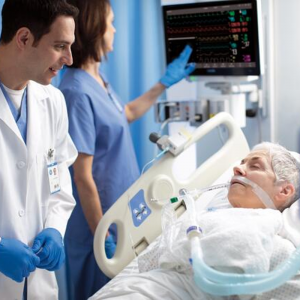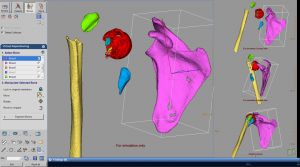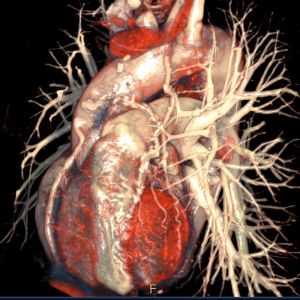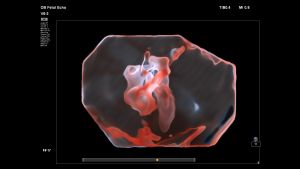Health Educators
- WebinarOnline – Philips Learning Academy, Sleep Therapy – Level 1Ref # : O58_SRC_WEB_005FreeAdd to Wish ListReg. Closed
- ClassroomAdelaide: Philips Learning Academy, Sleep Therapy – Level 1Ref # : O58_SRC_CLS_004
This course will train participants on Obstructive Sleep Apnoea (OSA) therapy with specific focus given to Philips DreamStation, Patient Interface and Connected Care Patient Management.
Target Audience: CPAP Providers who are new to Sleep Therapy or want to review current knowledge.
Course Date: November 1, 2023
Time: 9:00 am - 4:00 pm ACDT
Course Venue: Adelaide Oval, MTX John Halbert Room, East Gate, War Memorial Dr, North Adelaide South Australia 5006
Parking: The venue advises the closest car park is the East Wilsons Car Park via King William Road. Attendees being dropped off may enter via South gate. For your convenience, there is a venue map you can download below.*Please login with your registered email address and password, click "My Account" to add dietary requirements to your account when registering
Learn MoreFreeAdd to Wish ListReg. Closed - ClassroomSydney: Philips Learning Academy, Sleep Therapy – Level 1Ref # : O58_SRC_CLS_001
This course will train participants on Obstructive Sleep Apnoea (OSA) therapy with specific focus given to Philips DreamStation, Patient Interface and Connected Care Patient Management.Target Audience: CPAP Providers who are new to Sleep Therapy or want to review current knowledge.
Course Date: October 26, 2023
Time: 9:00 am - 4:00 pm AEDT
Course Venue: Philips, Ground floor, 65 Epping Road, North Ryde, NSW 2113Parking: Limited parking is available at the rear of the building, please present to reception to receive an access park if the boom gate is down. We encourage public transport where suitable. For your convenience, there is a venue map you can download. Please present at reception upon arrival to register.
*Please login with your registered email address and password, click "My Account" to add dietary requirements to your account when registering
Learn MoreFreeAdd to Wish ListReg. Closed - ClassroomMelbourne: Philips Learning Academy, Sleep Therapy – Level 1Ref # : O58_SRC_CLS_002
This course will train participants on Obstructive Sleep Apnoea (OSA) therapy with specific focus given to Philips DreamStation, Patient Interface and Connected Care Patient Management.
Target Audience: CPAP Providers who are new to Sleep Therapy or want to review current knowledge.
Course Date: October 24, 2023
Time: 9:00 am - 4:00 pm AEDT
Course Venue: Mercure North Melbourne, Hotham A & B Rooms, Cnr Flemington Road & Harker Street, North Melbourne, VIC 3051Parking: The venue advises to drive into the driveway, up the ramp or underneath into basement parking. For your convenience, there is a venue map you can download.
*Please login with your registered email address and password, click "My Account" to add dietary requirements to your account when registering
Learn MoreFreeAdd to Wish ListReg. Closed - WebinarManaging Traumatic Cardiac ArrestRef # : T05_HPM_RWEB_001
Traumatic Cardiac Arrest is the most urgent, time-critical, life-threatening trauma situation Emergency Medical Service personnel can face. The understanding and management of this condition has progressed significantly in the last few years. In this exciting, topical webinar, Prof Richard Lyon will present the epidemiology and pathology of TCA; describe the ‘HOT’ algorithm of pre-hospital interventions; how to maximize chance of survival and address some key issues such as whether chest compressions should be performed in TCA.
Delivery method: This is an online, self-paced course.
Duration: This course requires approximately 77 minutes to complete.
Learn MoreFree - WebinarCPR research updates and AHA guidelines previewRef # : T05_HPM_RWEB_002
Join our webinar for an exciting journey of clinical education to learn about the new developments in improving CPR and a comprehensive review of the new evidence and research around CPR today. In our webinar, you will also learn about new evidence that may be incorporated into the next refresh of the 2020 AHA guidelines.
CPR remains a widely researched topic in resuscitation studies and in recent years, there had been introduction of new technology, techniques and solutions to improve the efficacy of CPR. In this webinar, Dr Abella will provide his unabridged clinical opinion on these new developments in CPR and provide his assessment of the new evidence and the relevance to the upcoming AHA guidelines publication.
The webinar will cover the following topics:
- Review of the fundamentals of cardiopulmonary resuscitation
- Review of the latest technology and techniques and the clinical efficacy in improving cardiopulmonary resuscitation
- Overview recent scientific research in the current pandemic in that are clinically significant to cardiopulmonary resuscitation
Delivery method: This is an online, self-paced course.
Duration: This course requires approximately 60 minutes to complete.
Learn MoreFree - WebinarBeltless fetal monitoring solutionRef # : T05_HPM_RWEB_003
Mobility during childbirth for all women: a beltless fetal monitoring solution
Join us for the webinar where our guest speakers will present finds from a survey of over 200 Australian and New Zealand maternity units, regarding their use of continuous fetal monitoring devices that enable freedom of movement for women.
This webinar will encourage participants to reflect on the way they interact with technology in modern maternity care and to consider whether their own clinical practice optimize women's innate physiological processes.
Participants will hear about the findings of a clinical feasibility study of new beltless and wireless fetal monitoring used by over 100 women in labour at the Royal Hospital for Women, Randwick, NSW. The outcomes associated with use of the beltless monitoring device and the views and experiences of women, midwives and obstetricians who used the device will be described.
Delivery method: This is an online, self-paced course.
Duration: This course requires approximately 82 minutes to complete.
Learn MoreFree - WebinarCableless and beltless solutions are the way of the futureRef # : T05_HPM_RWEB_004
New directions in fetal monitoring: cableless and beltless solutions are the way of the future
This webinar, presented by researchers from the Centre for Midwifery, Child and Family Health at the University of Technology Sydney will explore best practice in labour and birth care with regard to fetal moniotring technologies. Presenters will discuss the importance of optimising physiological processes and providing respectful care in pregnancy and birth for each and every woman. Clinical strategies for enabling freedom of movement and positioning for women in labour and birth will be workshopped, and the benefits of using cableless CTG will be discussed.
You will also learn about future directions in fetal monitoring technology, including the results of an Australian trial investigating a new beltless fetal monitoring device. Throughout the webinar, participants will be invited to reflect on the way in which they use fetal monitoring technology and consider whether they can improve women's experiences.
Key learning points:
- The anatomical and physiological reasons why freedom of movement in labour is crucial
- Cinical tips and tricks for promoting active labour
- Upright birthing positions and why they work
- The benefits of using cableless CTG
- Introduction to new beltless fetal monitoring
Delivery method: This is an online, self-paced course.
Duration: This course requires approximately 77 minutes to complete.
Learn MoreFree - WebinarEmpowerment through Automated Early Warning ScoringRef # : T05_HPM_RWEB_005
Join us for an engagingdiscussion with our guest speakers on how automated Early Warning Scoring (EWS) aids in identifying subtle signs of deterioration in a general floor patient's condition at the point of care, hours before a potential adverse event. Caregivers and Rapid Response Teams can respond earlier - in time to make a difference.
Topic 1: How EWS combined with technology improve patient safety
Synopsis:
Vital signs monitoring is a routine nursing process that is time consuming but very important in any patient care. Patient safety is a priority in ensuring quality care and poor clinical monitoring is associated with preventable events. Automated Early Warning Score has tackled these 2 clinical issues by digitalizing the work process and automating the clinical tool Early Warning Score. We will share our experience in Bagan Specialist Centre in adopting this and its improvement in our safety indicators.
Key learning points:
- By digitalising vital sign mornitoring, we simplify the high-value work in nursing care
- By automating Early Warning Score, we improve the effectiveness of the clinical tool Early Warning Score
- In adopting Automated Early Warning Score, it is important to have it fully integrated with existing HIMS/EMR for successful implementation and outcome
- Start simple and keep enhancing it
- Automated Early Warning Score improve patient safety by reducing unplanned ICu admission by 44%, reduce hospital mortality by 50% and reduce ICU mortality by 30%
Topic 2: Early detection, Empowered care
Synopsis:
More patients care being admitted to the hospital with complex medical conditions. For an inexperienced nurse, it's not easy to make quick clinical decisions with regards to patient care, especially in a busy and fast paced environment. The Early Warning System is a customizable patient surveillance system, combining software, clinical decision support algorithms and mobile connectivity to help nurses identify effective interventions for the right patient at the earliest possbile time. It is an overall solution designed to aid nurses to accurately and quickly identify signs of deterioration, facilitating appropriate interventions to eliminate potential health events, thereby improving patient care, financial outcomes, clinical workflow and reducing patient's length of stay.
Key learning points:
- IntelliVue Guardian Solution (IGS) identifies significant deviations in a patient's vital signs
- The IGS EWS solution automates scoring of patient deterioration promptly as it is linked to the Philips Spot Check monitors and IntelliVue Cableless measurement
- EWS can be more reliable in identifying patient at risk than individual vital signs alone
- The system enales a tailored escalation plan suited to our hospital setting, allowing patients to receive appropriate management in timely fashion
- Respiratory measurements: IGS incorporates automated respiration rate into its EWS calculation. Respiration rate, which is not always captured correctly, is a critical factor in accurately predicting both sepsis and cardiac arrest
Delivery method: This is an online, self-paced course.
Duration: This course requires approximately 76 minutes to complete.
Learn MoreFree -
